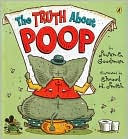
Grandits, John. 2004. Technically, It’s Not My Fault: concrete poems. NewYork: Clarion. ISBN 061842833X [Suggested Grade Levels 3-6]
REVIEW
In his first book of poetry, Grandits has produced a clever, witty, and engaging group of poems surrounding the character, Robert, a fun-loving, creative kid who loves, sports, computer games, and just about everything else except his sister and school. Linked together, the poems tell Robert’s madcap story.
The illustrations and type fonts that Grandits use to enhance his poems are kid-friendly and dynamic. Reading the poems requires the reader to turn the book in all directions increasing the actual fun of reading. The family squabbles and the sibling rivalry ring true and young people will relate. In a poem titled “How We Ended Up with a Plain Pizza,” shows type running along the outside circle of the pizza with the line, “All right, all right! We’ll order pizza. We have a coupon for one extra-large pie. But every body has to agree on what toppings to get” (Grandits, 2004). Each piece of pizza is one person’s opinion about what kind of pizza to order, which because there is no agreement, links back to the title of why they ended up with a plain pizza – very clever word play. The baseball, basketball, and skateboarding poems are right on.
The design of the book is definitely a strong point. The clever story that leads into the title is very funny. Robert decides to test Galileo’s theory of gravity with a concrete block and a tomato. He rationalizes the mistake as a scientific experiment gone wrong: “But in my opinion, the experiment was totally worth doing. There was just a slight mix-up, one tiny detail that went wrong, so even though the car has a concrete block sticking out of the roof, technically, it’s not my fault” (Grandits, 2004). Sharing Grandits’s concrete poetry with children will be a fun and stress-free way to enjoy poetry together.
CONNECTIONS
Invite children to compose and design their own concrete poems about sports or families. Display poems in the library.
RELATED BOOKS
George, Kristine O’Connell. Swimming Upstream: Middle school poems. ISBN 0618152504
Janeczko, Paul B. A Poke in the I. ISBN 0763606618
By Cay Geisler






